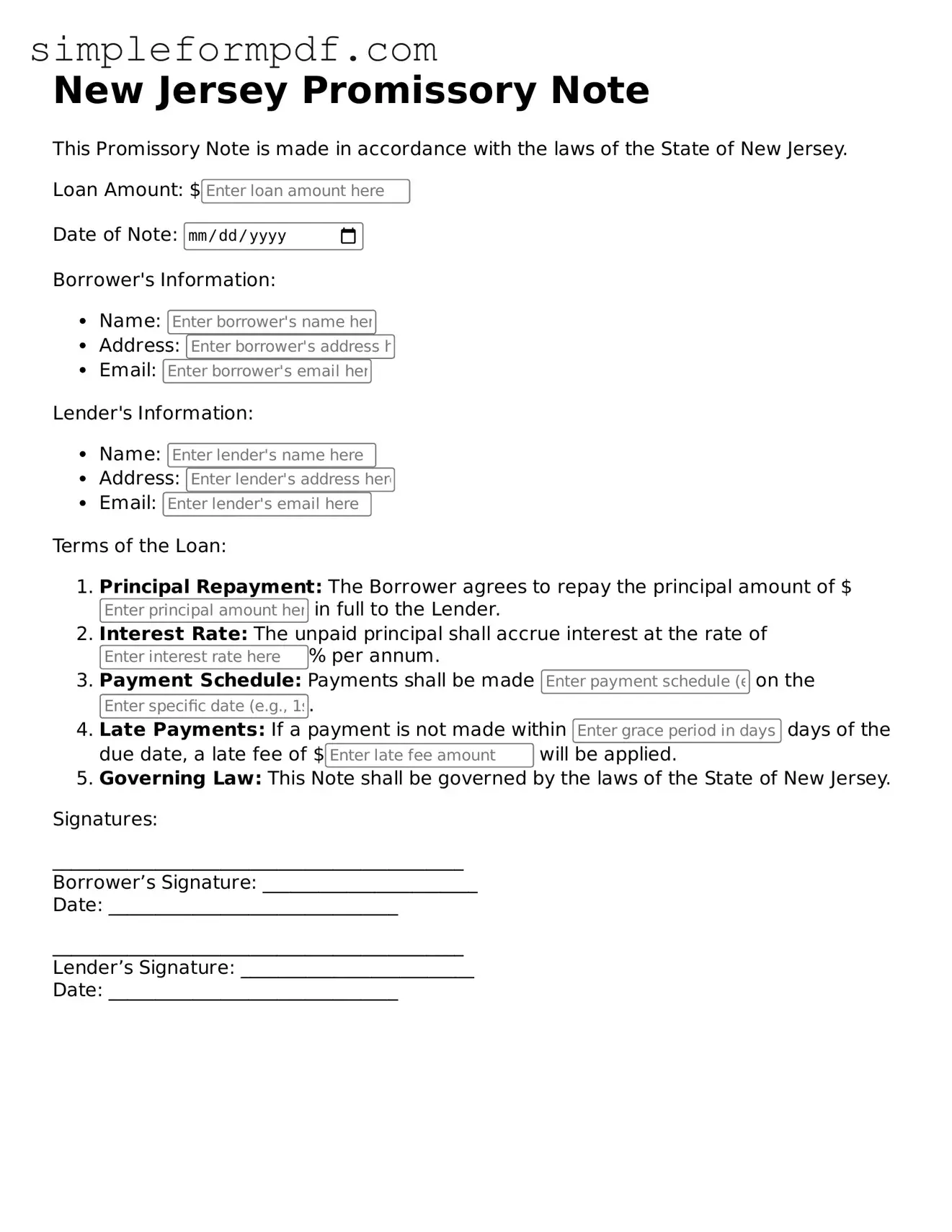Free Promissory Note Form for the State of New Jersey
A New Jersey Promissory Note is a legal document that outlines a borrower’s promise to repay a specified amount of money to a lender under agreed-upon terms. This form serves as a critical tool for establishing clear expectations and responsibilities between both parties involved in the transaction. To get started on securing your financial agreement, fill out the form by clicking the button below.
Launch Editor
